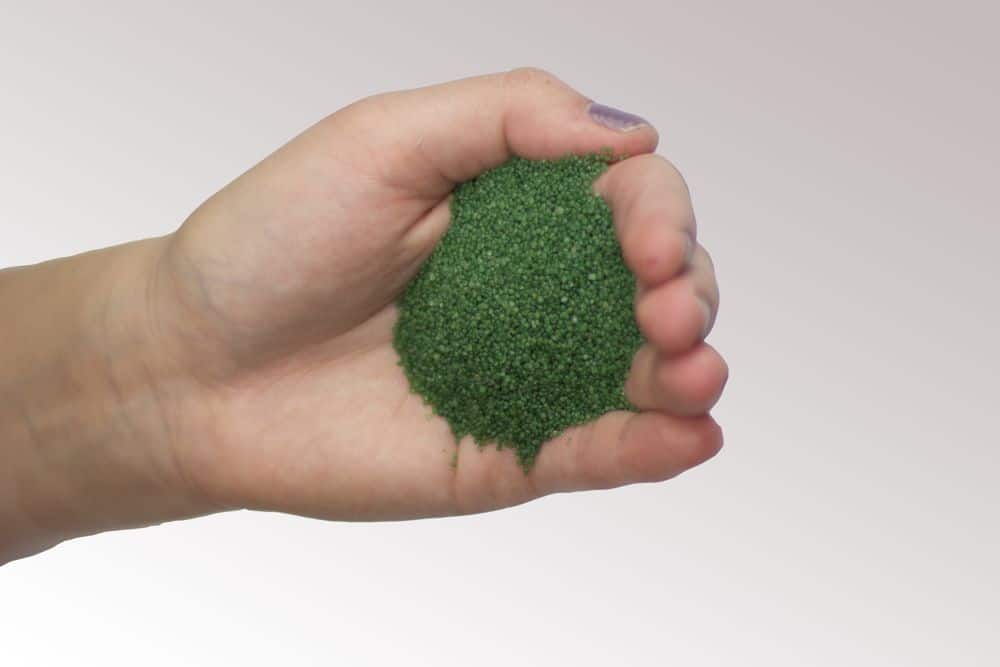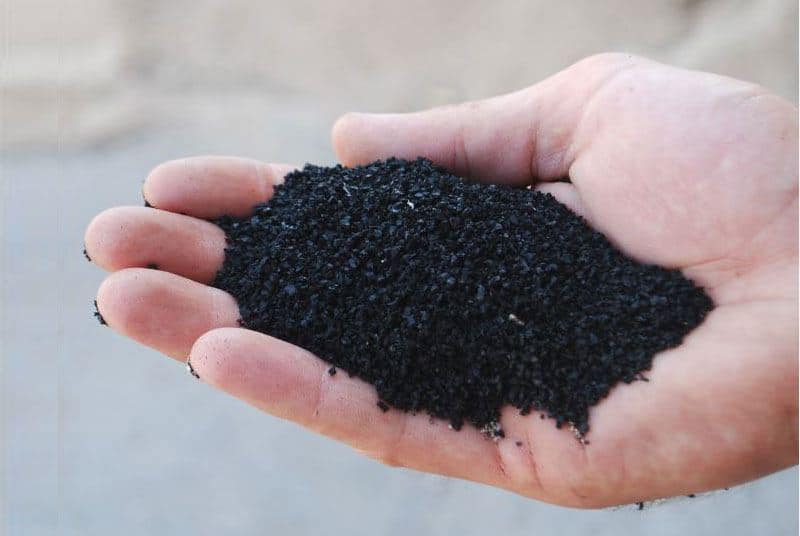A lot more people are looking into using artificial turf for their gardens and lawns because of the attractive and consistent look it gives. And with the many components artificial turf has, it looks realistic without having to spend a lot of time and money on maintenance. But before you invest in creating an artificial turf for your area, there are some things you may have been questioning.
For starters, what type of sand for artificial grass infill is best? Also, do you need infill for artificial grass and why?
Read on for the complete guide to artificial grass infill and what will be best for your area.

Do You Need Infill for Artificial Grass? Why?
According to the Connecticut State Department of Public Health, artificial grass infill is a layer of sand and/or synthetic materials. This is a beneficial layer resting on turf backing at the base of your synthetic grass blades. The reason behind adding infill is to allow your grass blades to stand up or maintain their upright position after being exposed to pressure.
Can you go for artificial turf without infill? It is possible, but there may be disadvantages. While you might find turf manufacturers and companies who claim that their products don’t need infill, this is a poor attempt to gain business to provide low quotations, sacrificing the turf’s performance, longevity, and overall quality. Products that are claimed to be non-infill turf are made with thicker thatch under layers, but still, need infill for proper performance.
So yes, all artificial grasses need to have infill. You can find infill used in sports fields, gardens, among other areas where artificial grass is used. It comes with numerous benefits, such as:
1. It prevents rippling
Artificial grass would expand and contract during temperature fluctuations. During the hot summer season, turf would expand a few inches, while it contracts come colder season. This would cause turf movement on the sub-layer, causing ripples and edges.
With infill, it weighs down and fastens your turf’s sub-layer well. That way, ripples, and ridges are prevented!
2. Holds turf in place
Artificial grass infill weight is around 1 lb per square foot. This equates to 5 kg per square meter.
If your infill is evenly spread, the weight will be distributed all over the area, ensuring that the turf won’t slide or move around over time. This is crucial especially if turfs aren’t edged by landscape edging, brick pathways, or concrete.
3. Keeps turfs cool
The sun would heat certain kinds of artificial turf, to the point it’s hard to walk on when barefoot. It would be harder for pets that want to go out and enjoy the grass during the daytime.
Artificial grass is a temperature regulator, keeping the grass cooler compared to missing out on infill. Furthermore, adding light-colored infill sand will create a heat-reflecting layer, which helps keep turfs cool through repelling heat.
4. Protects the fibers and backing
Besides keeping the artificial grass fibers standing up straight, it also makes them resistant to wear and tear. Furthermore, infill protects the backing of turfs.
Remember, grass blades are the most susceptible to damage, specifically at the base of blades as they tie into the backing. With infill applied appropriately, it sits along the base of the backing, acting as a protective barrier. This makes sure that the fibers are protected from the weather, children, and pets who play on the grass.
5. Improved drainage
Backings of turfs are punches with holes for drainage. This allows water to drain through the sub-layer, located under the turf backing. With infill, water, rain, and pet urine will drain better.
Types of Artificial Grass Infill
Now that you know what artificial grass infill does, what are the different kinds of infill materials to choose from? Here are the popular and common kinds to look into:
1. Silica Sand

This is made of quartz and has been eroded from water and wind. When quartz erodes, it will break down into small granules, which would be used for artificial grass infill, among other uses.
Silica sand will help keep artificial grass blades standing upright. What’s great about this kind of infill is that it’s the least expensive, which is a great option for those on a budget.
That said, the sand isn’t rounded but angular, which can lead to premature fiber breakdown. Also, it can harbor moisture, which may result in bacteria growth and mold and mildew development/ Since sand can harden, the artificial grass might also lose its permeability while trapping pet odors.
2. Acrylic Sand

Acrylic coated sand is a great choice, featuring antimicrobial protection. This would prevent bacteria and microbe growth, which are what cause odors, stains, and other negative effects on the turf. Like Zeofill, it’s ideal for households with pets thanks to its odor-reducing features and excellent drainage.
3. Zeofill

Also known as Zeolite, this is a child and pet-safe volcanic mineral with moisture-absorbing properties. It’s a good choice for pet owners, as it acts similarly to cat litter. It prevents odors by capturing ammonia found in urine, preventing it from turning into gas.
4. Walnut Shell

Walnut shell is another common and popular type of infill thanks to its cooling features. This is because it can absorb water well without expanding. Even throughout the dry season, walnut shell infill keeps turfs cooler compared to crumb rubber.
This is made of organic food-grade, making it environment-friendly and safe for children and pets.
5. Crumb Rubber

Crumb Rubber is a popular infill usually for sports applications, based on the New York State Department of Health. It’s made from recycled tires, which are ground into small granules. This material will give turfs a unique bounce, which is why they are mostly used on sports fields and high-traffic areas. Since it doesn’t kill bacteria and absorb sunlight, your yard can get very hot.
That said, rubber traps heat and odor, making the area warmer than normal. Also, it might stain your clothes, shoes, towels, and furniture because of the black dust.
What Type of Sand for Artificial Grass Infill is Best?
We mentioned two types of sand infills above, which are silica and acrylic sand. Among the two types, the best one to use for artificial turfs is acrylic sand.
Professionals recommend acrylic sand because of its bacteria and odor-fighting properties, which help the grass last longer. Furthermore, pets will be able to run free and stay comfortable, even urinating and doing their business without running the risk of smelly or damaged turf.
When you invest in high-quality acrylic sand infill for artificial grass, you can also expect other benefits, including:
- Rounded shape, making it easier on the feet and paws
- Reduce odors and breaks down bacteria
- It doesn’t compact over time, so it’s great to play in without worrying about damage in the long run
- The infill provides better drainage since it won’t compact quickly, so water and urine drains on their own
- Based on this study conducted by Massey in 2020, sand is reusable and non-toxic compared to crumb rubber
This is compared to silica sand, which has more disadvantages compared to acrylic. While silica sand is cost-effective and helps in keeping the grass blades upright, it doesn’t hold the similar odor and bacteria-fighting features that acrylic sand offers. Furthermore, they are more likely to break down quicker and increase the risk of mold and mildew development on the turf.
Sure, you are saving a bit of money when you invest in silica sand, but you get what you pay for. That’s why acrylic sand is the best choice overall, even when compared to the other infill types mentioned above!
But why opt for sand infill over the other materials, in general? This is because sand infills offer a lot more benefits, which are:
1. Increased Security
Sand infills will add more weight to artificial turf compared to other materials. This added weight will make it more difficult to lift off the grass from its original position. That way, your grass is safe from artificial grass theft, which is crucial in commercial applications.
2. Prevent Static and Weeds
Artificial turfs have problems with weed and static, which is uncommon, but it happens. With sand infill, prevent the build-up of static electricity and also prevents weed, as there are weed-free sand infills available. That way, your artificial turf is weed-free while everyone stays safe from static, adding to the comfort of the turf.
Wrapping It Up
There are a lot of different kinds of artificial grass infill to choose from, with sand being the best option. However, there are also many types of sand to look into, making the process a bit daunting for newbies. With the right assessment and knowledge behind artificial grass infill, you can narrow down your choices.
Hopefully, you found insight and will keep this information about sand for artificial grass infill in mind. Good luck in finding the most suitable kind of sand for infill and enjoy the many benefits a beautiful turf will provide soon!